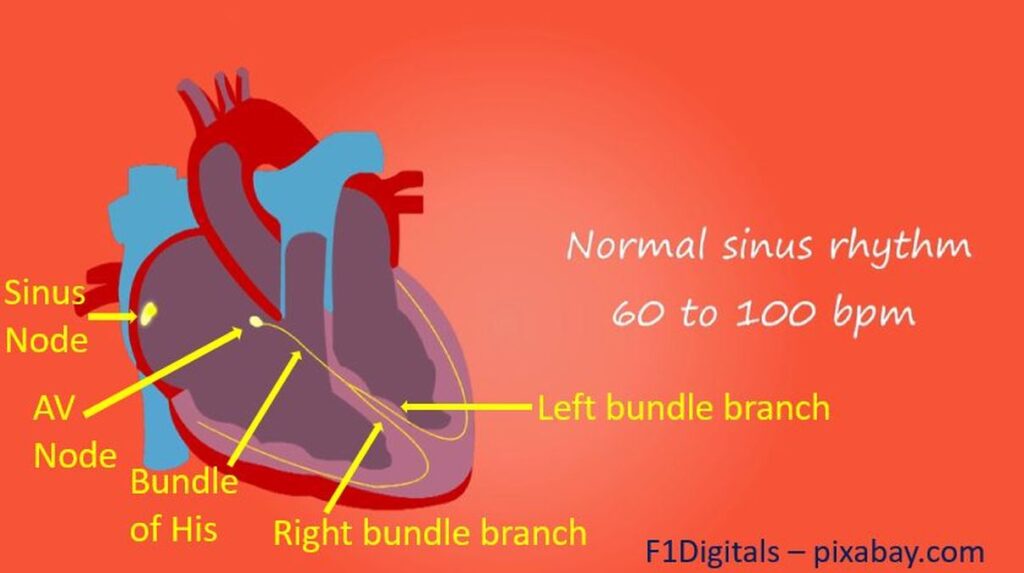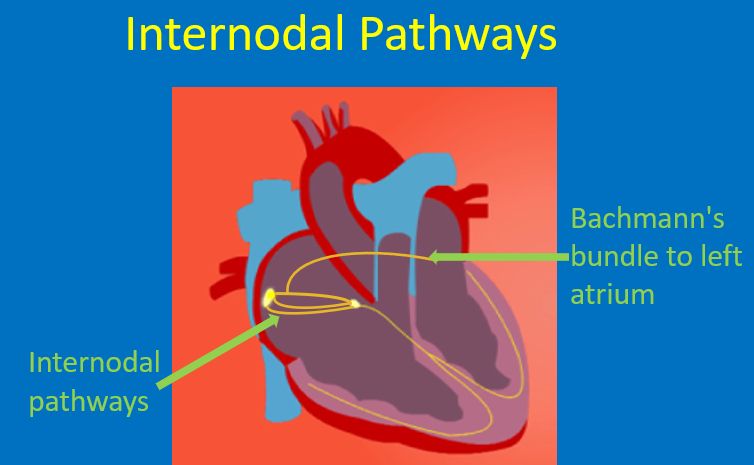Electrical system of the heart
Electrical system of the heart ensures its rhythmic contractions at normal rate of 60-100 per minute. The signal generator of the heart is known as the sinoatrial node (SA node) and the relay station is known as the atrioventricular node (AV node). Signal conduction between the nodes is through internodal pathways and that from the AV node into the ventricles through the bundle of His and its branches.

SA node
SA node is the natural pacemaker of the heart which controls the heart rate. It is in turn under the control of the brain by the autonomic nervous system. SA node increases and decreases its rate in relation to the physiological need of the body. When we take rest, the rate is low and it increases gradually with progressive exertion. Heart rate increases with emotional stress as well. SA node is located in the upper part of the right atrium (upper chamber of the heart), near the entry of the superior vena cava (blood vessel draining deoxygenated blood from the upper part of the body).
Internodal pathways

There are three signal pathways within the right atrium which connects the SA node to the AV node. One of them gives a branch to the left atrium (left upper chamber of the heart) for giving electrical signals to that chamber.
AV node
AV node is situated at the junction of the upper and lower chambers of the heart (AV junction), almost in the middle, at the lower part of right atrium. It delays the signals coming from the SA node so that contraction of the upper chambers are fully over before the lower chambers start contracting.
Bundle of His
Bundle of His is the electrical conductions system of the heart which crosses the AV junction and passess into the wall between the right and left lower chambers (ventricles) of the heart. It divides into two bundle branches – right and left for each ventricle. Left bundle further divides into two divisions, one of which goes to the front region and the other to the back region of the left ventricle (left anterior and left posterior fascicles).
Purkinje fibres
The bundle branches divide further into numerous small branches which take the electrical signals to all the muscle cells of the ventricles. These tiny branches are known as Purkinje fibres.
When the electrical system of the heart fails, the heart beats slow down and the person can get a black out. If the slowing is due to a permanent cause, an artificial electronic pacemaker is implanted under the skin and connected to the heart by a lead wire to restore the heart rhythm. If the cause is temporary (reversible), a temporary external pacemaker is used instead, which can be removed after the spontaneous rhythm of the heart is restored.



